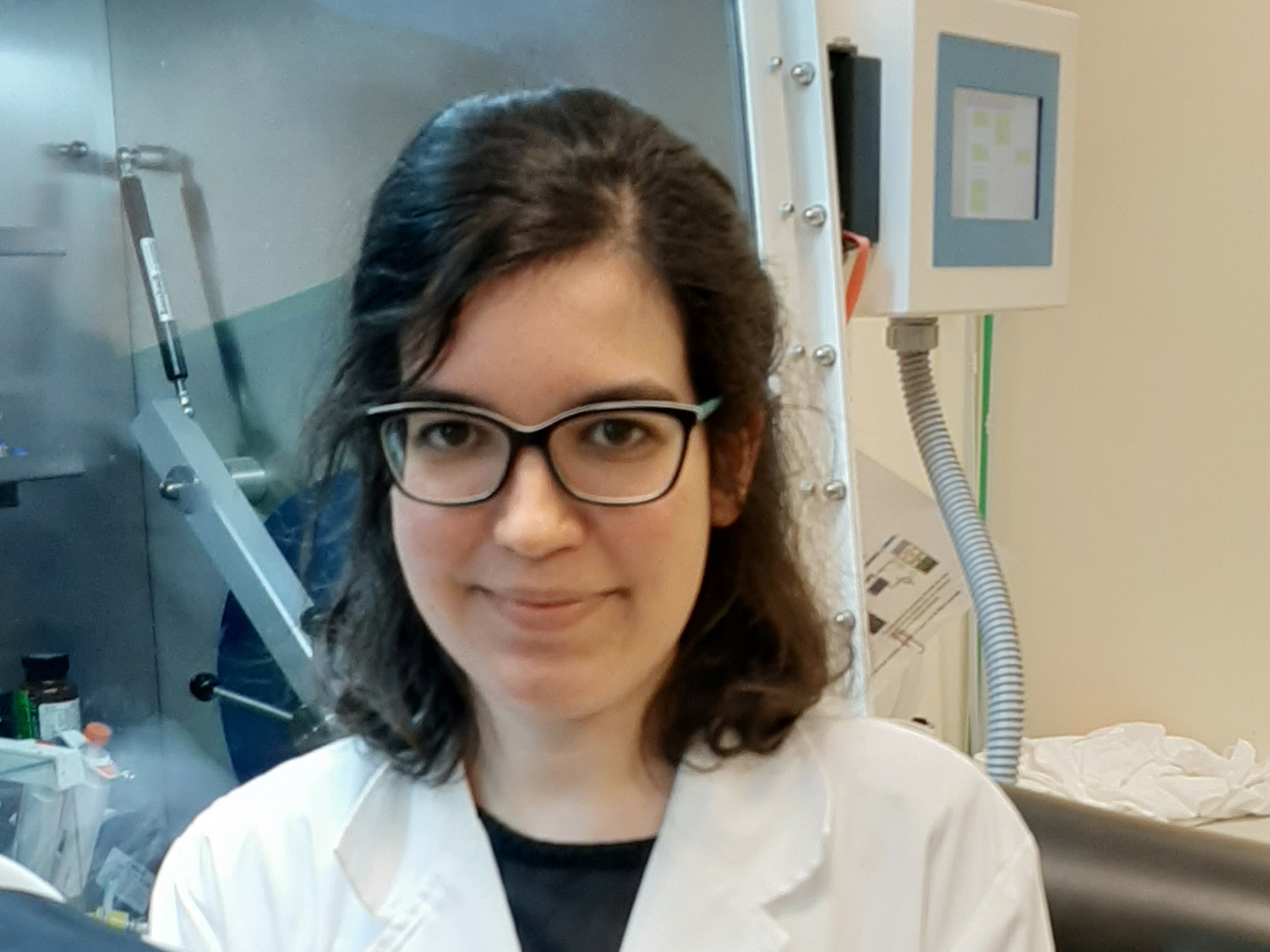The Royal Spanish Society of Chemistry, in its Territorial Section of Western Andalusia, has awarded one of the Prizes for the Best Doctoral Thesis of the 2020-2021 academic year to Marina Pérez Jiménez, a researcher who carried out her thesis at the Institute of Chemical Research and where she recently won a second prize in the cicCartuja Ebro Foods Award 2021.
Her thesis entitled “Reactivity of Quadruply Bonded Dimolybdenum Hydride Centres: Elementary Organometallic Reactions and Coordination to Main-Group Metal-Carbon and Metal-Hydrogen Bonds“, is framed within the field of organometallic chemistry and in particular, focuses on dimolybdenum complexes that present quadruple bonds between Mo atoms. In it, the reactivity of these compounds towards alkenes, alkynes and heterocumulenes is analyzed, demonstrating that essential organometallic reactions, well known and studied for complexes Mononuclear complexes also occur in bimetallic complexes with multiple metal-metal bonds, where the cooperativity between the two metal centers is essential. In addition, these dimolybdenum systems have allowed the stabilization of monomers of molecules such as lithium hydride or methyl lithium, thanks to the coordination of Li-H or Li-C bonds to the dimolybdenum platform, through non-classical interactions of 3 centers and 2 electrons. This concept has been extended to other E-C bonds where E is a main group metal such as Zn, Mg or Al. All the new synthesized molecules have been studied in the solid state through experimental techniques such as X-ray diffraction, as well as in solution through spectroscopic techniques such as Nuclear Magnetic Resonance (NMR).
The relevance of this work lies in the fact that, although the existence of the quadruple bond between transition metals has been known since 1964, hardly any studies have been carried out on its reactivity and possible applications. In Marina’s thesis, she investigates bimetallic dimolybdenum systems with quadruple metal-metal bonds, which provide a new platform to access the activation of various bonds. Thanks to this, she has managed to stabilize LiH or LiR monomeric units, highly reactive species that tend to oligomerize and form very insoluble crystalline networks, making their use difficult. Through the coordination of Li-H and Li-C bonds to the bimetallic center of Mo2, she has managed to stabilize these monomers, giving rise to unprecedented molecular structures of which a deep study has been carried out both in terms of their properties and their structure and bond.



